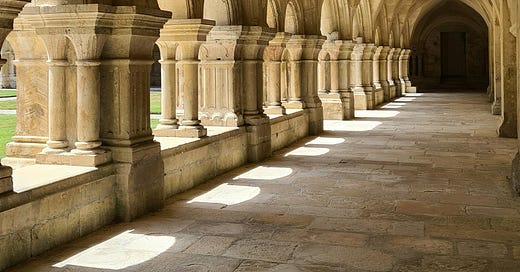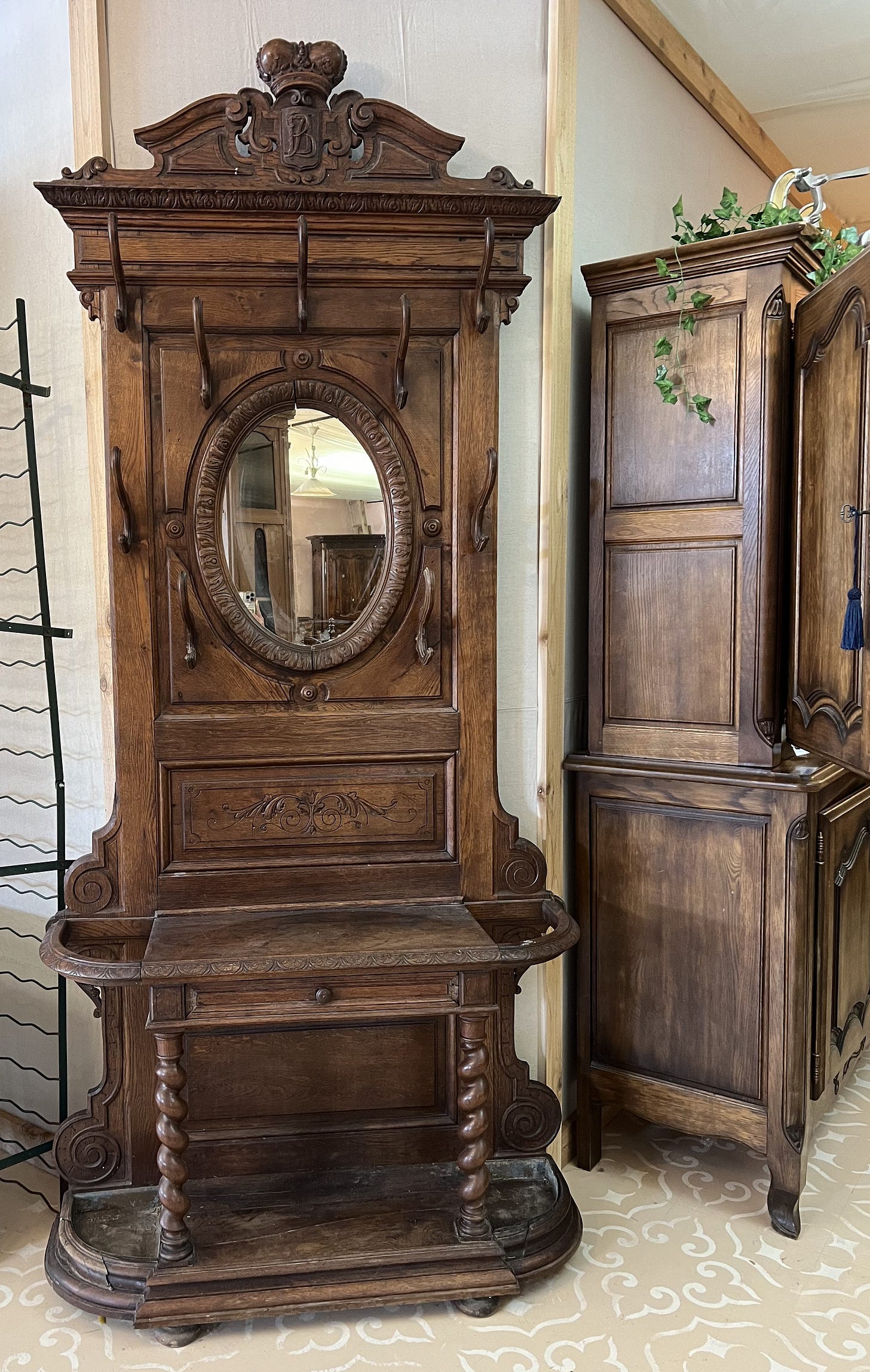Trending: Monastic Luxe
The Pendulum of Style Has Swung Back to Timeless Patterns, Aged and Rustic Wood, and a Vibe of the Sacred
My family and I recently had lunch with friends on their Virginia farm. As I stepped out of the car, summer heat scented with lavender and the Mediterranean style home in yellow stucco immediately took me back to the many months I spent in Provence during and just after college.
The husband explained that despite his modest earnings, his family lived on an expansive farm with breathtaking views because of the generosity of his parents. Their generosity provided stability, beauty, and patch of earth upon which to establish something solid and long-lasting. My host, humbled by his family’s generosity, said he was just the steward.
While most of us aren’t in this situation, we have an even greater patrimony that we rarely acknowledge. Who among us could ever dream up the wonder, depth, awe, beauty, and traditions of the Church that so many of us take for granted every day. But these gifts, passed down now for millennia are something for which we should feel not just gratitude, but a true call to steward this wealth well. Not just church buildings and its trimmings, but the sacraments, the communion of saints, music, literature, and the steady guide for union with God.
Most Catholics today, particularly those not really practicing, treat the faith like crocheted linens or a family heirloom that no one really wants to use but can’t quite bring themselves to give up. It sits folded in a dark closet, gathering dust, with the expectation that maybe someday it will be useful or wanted by someone. It isn’t treasured, but stored out of sight, all but forgotten.
Remarkably, however, the old and forgotten is making something of a steady comeback. Suffering, discomfort, and having “tried everything else,” is helping Catholics who once thought they didn’t need Catholicism give their faith a second look. Even The Free Press has noticed, publishing “How Catholicism Got Cool.” Writer Madeleine Kearns speculates about the fuel behind the trend: “Modern Americans are starved of beauty, meaning, purpose, and community.”
The trend toward the sacred isn’t just happening with the increase in conversions, particularly among young men, but is making its way into the broader culture. Pilgrimages at Chartres and the Camino de Santiago are experiencing record numbers. Wolf Trap, the popular outdoor concert venue just outside of Washington, D.C. is featuring a play about martyred Carmelite nuns in the French Revolution, called Dialogue of the Carmelites. Our hunger for the sacred is even showing up in new and generally hopeful trends in very unexpected places.
Monastic Luxe is a new styling trend, defined by House and Garden UK, that is “not exactly minimalist, but certainly not maximalist. … Think lots of organic materials – linen, natural fibre carpets, muted colours and characterful antiques (but not too many of them).” It elicits a feeling of rest, with “less is more” as a defining characteristic.
There is also an emerging use of sacred terms for brands, even if the product has no connection with that which is sacred. There is a rising trend in restoring monasteries, or acquiring pieces used in monasteries.
Monastery Skin Care based in California which describes itself as “a new botanical skincare brand that sources ingredients a quality level ordinarily reserved for luxury perfumiers. Made by hand in small batches. Monastery products are known for their remarkably pure formulations and scents.” It is not, however, made in a monastery and if it has a patron saint, it is the goddess Athena, for whom the founder was named.
Clothing brands are capitalizing off of the holy, such as women’s clothing line, Sanctuary, and another in Australia called SAINT.
Italy has a luxury hotel called Eremito, Italian for hermit, that offers a unique experience of retreating to the site of former hermitages, away from screens, but with the trappings of a luxury hotel. The website touts it as a “place close to hermitages of the fourteenth century, which today has retrieved its authentic original splendour.” It is “a place where one can regenerate one self finding again the priorities of life maybe lost in the day to day living.”
While there could be a sense that these names are being used to capitalize on a trend — particularly those have nothing to do with that which is holy — it can also be read as a broader sign that the sacred is no longer taboo, or weird, or just limited to Jesus-junk. Rather, it has a real dignity and value, now to be esteemed in the broader culture.
Antique dealer, Julien Lacaze, has noticed a shift in his own work at Vintage in Marshall, Virginia. He started importing French antiques into Northern Virginia about three years ago. While in Europe, he explains, the trend has been to prefer more modern styling, including IKEA, over antiques, the mood is much different in the U.S. “The younger generation, especially first time home buyers, are more excited about older pieces, and new appreciation for the longevity of things.”
“From my experience,” Lacaze adds, “I still feel the local population in Europe is trying to modernize and get rid of the antiques, but there are people that I find that are restoring older properties, and when they do that, they then want antiques that match.”
We all know that trends change and the essential values of the faith can easily fall from popular-grace just as easily as they were added. This is where the real work begins, of helping those around us see that this trend isn’t just another shifting fad. It is a true patrimony, full of wealth and wisdom, something a single generation could never replicate, but each is called to steward and care for, strengthening it for the generations to come.
For details about this one of a kind French Coat Rack from a French Monastery {$1295}, contact Julien at Vintage.







